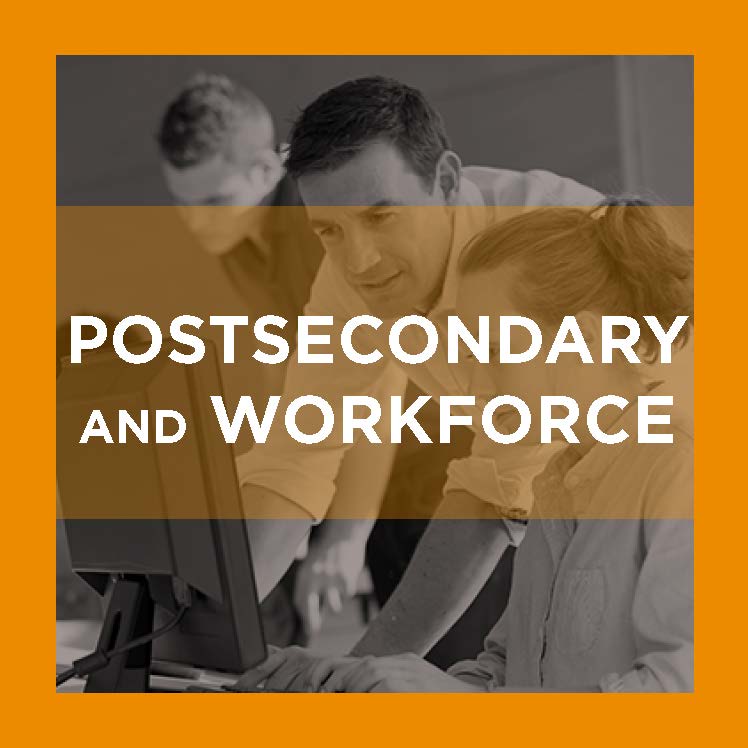This year continued the growing trend of workforce development policies, programs and initiatives. From governor action plans to a federal legislation overhaul, the topic of workforce needs in states remained at the forefront. Through our legislative tracking, we saw 166 bills introduced in 32 states — 28 of which were ultimately enacted. Legislation covered a range of topics, including:
Career Pathways and Skills: Whether the path leads from the secondary or postsecondary level into the workforce, clear pathways to employment and training in high-demand fields proves to be important in the journey. Multiple states addressed pathways and skills through apprenticeship legislation. Oklahoma’s S.B. 1171 created the Work-based Learning Program through the Oklahoma Office of Workforce Development to increase the number of registered apprenticeships and internships by 20,000 positions by 2020. Policies enacted in other states ensured students received credit toward high school graduation or postsecondary course credit for apprenticeship completion.
Legislation Goals:
- Create partnerships between secondary, postsecondary and workforce, creating pathways to employment.
- Ensure credential outcomes are aligned directly with the skills and needs of the state workforce.
Financial Incentives: States frequently note a lack of funding as a roadblock for progress in workforce development. Over the years, legislative tracking has shown states creating financial aid support for students moving through postsecondary education. In 2018, however, we saw some states looking to incentivize employers to create opportunities for students to earn and learn while preparing them with skills needed in the workforce. Iowa’s H.F. 2458 created the Future Ready Iowa registered apprenticeship development program, providing financial assistance to small- and medium-sized business sponsors to establish new or additional eligible occupations in the program to grow and expand high-quality work-based learning experiences in high-demand fields.
Legislation Goals:
- Appropriate funding for the workforce needs of the state.
- Cultivate employer buy-in and partnerships with education entities.
Partnerships and Working Groups: States grapple with the question of who ultimately takes responsibility for workforce development progress. This year, we saw multiple states create, update or give additional authority to task forces, boards and official partnerships aligning education and workforce efforts. Indiana’s S.B. 50 created the Governor’s Workforce Cabinet, which is required to identify workforce needs and recommend a strategic plan to meet investment needs, develop a career navigation and coaching system requiring all high schools to participate, conduct a college and career funding review, and study the advisability of creating a real-world career readiness program that provides students with career and technical education credentials to transition from school to the workforce.
Legislation Goals:
- Create a cohesive governance structure, working toward statewide workforce progress.
- Build key stakeholder engagement from secondary, postsecondary and employers.
Workforce Data: Twenty-seven states include workforce agencies within their state longitudinal data systems. While data collection can be done easily in certain states, building the capacity to analyze that data and use it in employment forecasting can be a challenge. In Maryland, H.B. 1216/S.B. 978 required the Maryland Higher Education Commission to collect and provide to the Maryland Longitudinal Data System Center information on specified business licensees and students receiving industry and vocational certificates. Information includes program sequences taken, start and end dates of enrollment, program completion status and credentials earned.
Legislation Goals:
- Develop data analysis capacity to assess student progress and employment success.
- Ensure data utilization allowing employment forecasting and skill needs.
For more on these workforce development topics and goals, don’t miss our brief, Approaches to State Workforce Development Systems, which shares insights from four states that are working to align postsecondary education outcomes with employer needs. They tell us how their workforce development systems come about and identify key components to sustaining their efforts. As the midterm elections look to shake up the state leadership landscape, we can expect to see workforce development top of mind heading into the 2019 legislative session.










